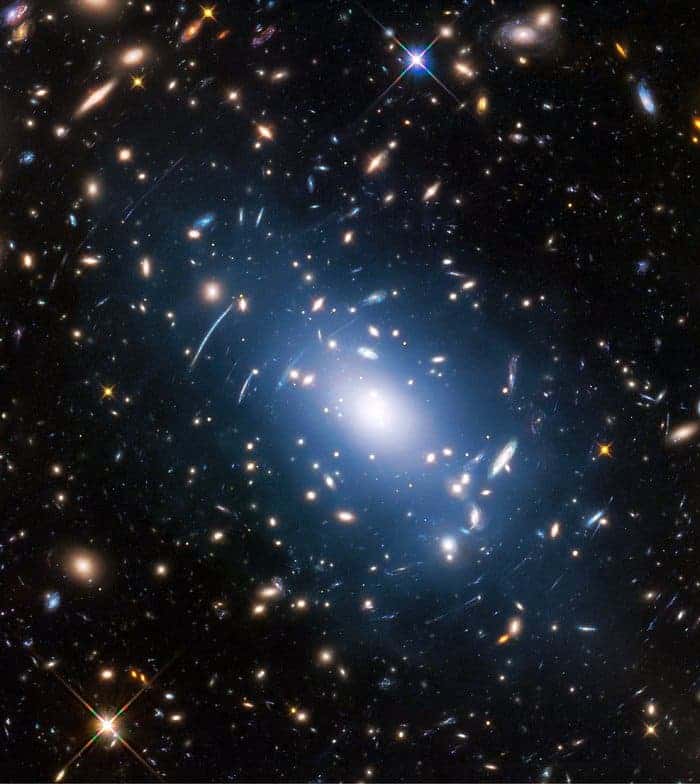
Some stars have no galactic allegiance. These rogue stars, which are not gravitationally bound to any galaxy, roam freely throughout intergalactic space. Now, astronomers claim that starlight emitted by rogue stars could be used to map the distribution of dark matter in the universe.
Dark matter and dark energy make up 95% of the observable universe, despite the fact that none of our instruments are capable of detecting them. Yet scientists know that dark matter must exist because of the gravitational force it exerts on the surrounding matter — and whose effects we can measure. For instance, dark energy is the only thing that explains the acceleration of the expansion of the universe, which has been thoroughly documented.
Scientists have used all sorts of methods to plot the distribution of dark matter in the universe. One of the most widely-used methods exploits the fact that dark matter bends the light around it, altering its movement. This phenomenon, known as gravitational lensing, can be measured. Previously, this method was successfully used to create a 3D map of dark matter based on observations of 10 million galaxies, including those from very far away in space, from which light created billions of years ago is only now reaching Earth.
Now, scientists have a new trick that reveals the presence of dark matter — and it works by studying the starlight of rogue stars. When two galaxies interact, individuals stars can be stripped apart from their galactic homes, left free to roam within the cluster. These stars end up vagabonding where the majority of the mass of the cluster resides, which is mostly made of dark matter. So by pinpointing the source of rogue starlight, the astronomers claim that they can map dark matter.
“We have found a way to ‘see’ dark matter,” Mireia Montes, of the University of New South Wales, Australia, and lead author of the study, said in a statement. “We have found that very faint light in galaxy clusters, the intracluster light, maps how dark matter is distributed.”
According to Montes, intracluster light is aligned with dark matter, tracing its distribution more accurately than any other method relying on light used so far. The method is also more efficient than those based on gravitational lensing, which requires complex and time-consuming spectroscopy.
All that we know for sure right now is that dark matter seems to interact with regular matter gravitationally. But if scientists find that dark matter is distributed significantly different than light from free-floating stars, that could be a game changer. Ultimately, work such as this might one-day probe the fundamental nature of dark matter.
“If dark matter is self-interacting we could detect this as tiny departures in the dark matter distribution compared to this very faint stellar glow,” highlighted Ignacio Trujillo, of the Instituto de Astrofísica de Canarias, Spain, co-author of the study.
The findings appeared in the Monthly Notices of the Royal Astronomical Society.






